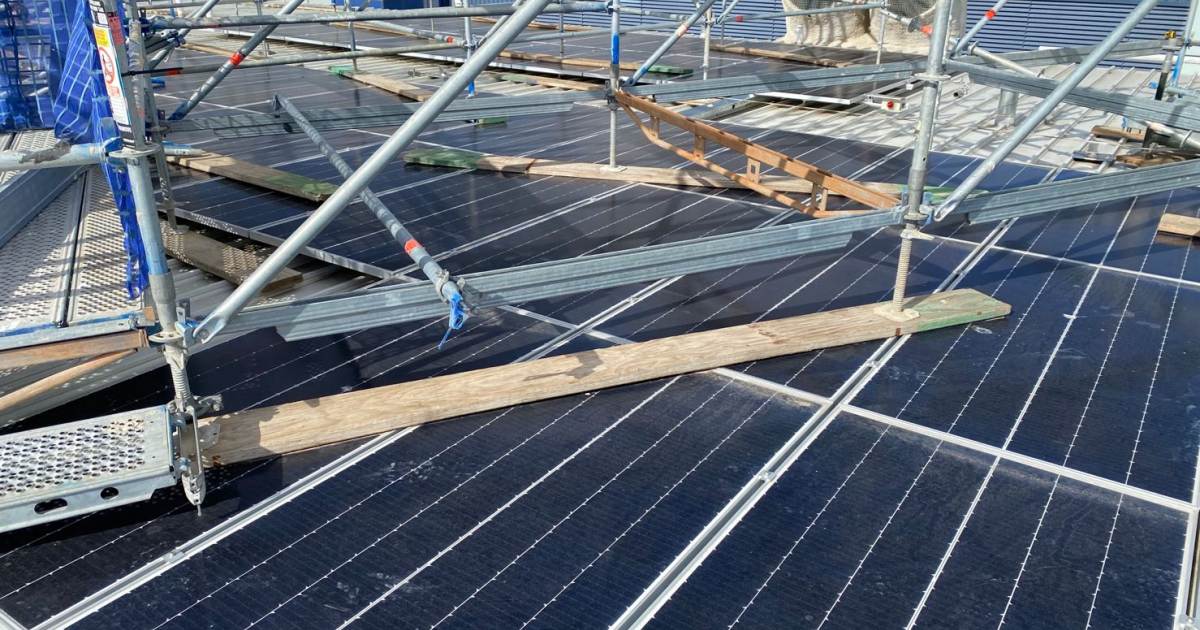
Photos of scaffolding erected on top of solar panels have created quite a stir in the solar industry. It’s not hard to understand why.
An EPC Solar Group customer contacted the company suggesting the firm come and take a look at what was happening with their rooftop installation after builders set up scaffolding for whatever reason. The EPC Solar team had quite a shock after inspecting the system, leading to a LinkedIn post from Founder/Managing Director Daryn Stocks:
“I have never seen anything like this so I think we need to make the construction industry aware. Solar panels are not designed to support heavy loads. Solar panels cannot be walked on. If you are a builder, insurance builder, construction worker or in the trades. Please treat solar panels as fragile.”
Mr. Stocks said the system has now been isolated and will need to be replaced as most of the panels have been used as a walkway or scaffold base, and will have sustained cell fractures and micro-cracks.
“.. as this project is 70mts above ground, it is a very expensive process which will fall back onto the builder,” he stated.
What Are Micro-Cracks?
There are many photos floating around the place of proud new owners of solar panels standing on top of them. These images make installers break into a cold sweat, and a lot of coffee has been sprayed on screens over the years.
Good quality solar panels are made to withstand the various harsh environmental conditions they will be subjected to for decades. A pair of work boots with a human in them or supporting scaffolding aren’t among them.
Aside from visible cell fractures, it’s the damage you can’t see that is also a major problem – micro-cracks. As the term suggests, these are tiny cracks invisible to the naked eye. Micro-cracks will immediately reduce the output of an affected solar panel, and this will worsen over years as temperature changes causing expansions and contractions pull apart materials around the crack. Micro-cracks can also create “hot spots”, which in a worst-case scenario can lead to a fire.
Here’s a look at what can happen to a solar panel as it is being is walked on.
Some solar panels are better at resisting this type of damage than others, but the point remains this is avoidable and simply shouldn’t happen in the first place. You’ll never find a manufacturer of conventional solar panels stating it’s fine to walk on their modules, and damage caused by doing so will not be covered by a manufacturer’s warranty.
If you’re a solar power system owner and have tradies working on your rooftop, it’s probably a good idea to remind them to not walk on your panels. While this should be a common sense thing, as this incident indicates sometimes that may be in short supply.
By the way, micro-cracks can also occur during the manufacturing process, transport and installation. This is why it’s important to choose a good solar panel brand, and why good installation is critical.

 RSS - Posts
RSS - Posts



Surely some people cannot be that stupid
“The problem with common sense is it’s not common.”
My duplex neighbour is using our roof (with permission) to do construction on their new extension’s roof.
Our solar panels are literally next to and below where some of this construction is taking place.
Any suggestions for covering / protecting them during the roofing?
Hi Karla,
It really depends what you’re protecting from. Plastic drop sheets are fine for short term prevention of paint splatter or overspray. (Paint is very difficult to remove)
If it’s longer term or more mechanical impact protection then I would look at cardboard kept in place with a tarp perhaps.
Panels are very durable but the best approach is to make sure the builders know they need to be careful.
Nobody should ever walk on the glass.
Thanks Anthony. I believe no painting is involved, but I will certainly double check that. As the panels are on racks it would take some parkour skills to walk on them & the builders are well aware of my concerns for my panels 🙂 With advice from their electrician have covered them with sheeting and a thick type of bubble wrap.